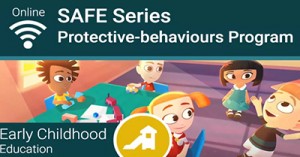Respiratory viruses cause illnesses that affect the nose, throat, and breathing passages, including the lungs. These viruses commonly result in mild cold- or flu-like symptoms.
What Is A Respiratory Virus?
Respiratory viruses cause illnesses that affect the nose, throat, and breathing passages, including the lungs. These viruses commonly result in mild cold- or flu-like symptoms in most people, except in those with risk factors, the elderly, and the very young. Common respiratory viruses include:
Human Metapneumovirus (HMPV)
What are common symptoms?
- It usually causes a mild infection similar to a common cold.
What age groups get this virus or are at highest risk?
- Young children, older adults, and people with weakened immune systems are at high risk of complications
What complications can occur?
- bronchitis
pneumonia
Rhinovirus
What are common symptoms?
It usually causes a mild infection similar to a common cold.
What age groups get this virus or are at highest risk?
One of the most frequent causes of the common cold in adults and children.
What complications can occur?
-
sinus infections
-
ear infections
Adenovirus
What are common symptoms?
Can cause mild flu-like symptoms, conjunctivitis, or gastrointestinal symptoms like stomach pain, diarrhea, or vomiting.
What age groups get this virus or are at highest risk?
People with weakened immune systems are at high risk of developing severe illness.
What complications can occur?
Severe illness is less common.
Human Parainfluenza Virus (HPIV)
What are common symptoms?
It usually causes a mild infection similar to a common cold.
What age groups get this virus or are at highest risk?
Young children and people with weakened immune systems are at higher risk of complications of HPIV.
What complications can occur?
- croup
- bronchitis
- bronchiolitis
- pneumonia
How Do Respiratory Viruses Spread?
Respiratory viruses are spread from person to person by:
- breathing in droplets when someone with the virus breathes, coughs or sneezes
- touching a contaminated surface or object that a person with the virus has coughed or sneezed on, then touching their own eyes, nose or mouth.
What Are Common Symptoms Of Respiratory Viruses?
Symptoms may be different depending on which virus is causing the illness and people with the same virus may have different symptoms and severity.
However, there are symptoms that are common to many respiratory viruses. These include fever, cough, runny nose, sneezing, sore throat, headache, muscle aches, fatigue and feeling generally unwell.
Symptoms will often be mild or moderate, but some people may get very unwell and this is usually due to complications from worsening infection.
- Bronchiolitis - swelling and congestion in the small airways (bronchioles) of the lungs causing a bubbling sound when listening to breathing. This occurs most commonly in young children and children under the age of 1. This can make it harder to breathe, drink and eat.
- Bronchitis - swelling and congestion of the large airways (bronchi) of the lungs causing a cough with phlegm and shortness of breath that can take weeks to resolve. This can occur in older children and adults.
- Croup - swelling of the upper airway including the voice box (larynx) and windpipe (trachea) making a person work harder to breathe, especially at night. It commonly presents with a barking cough that starts after a child has had a mild cold for a few days. Most likely to occur in children.
- Pneumonia - infection and swelling of the lungs which has symptoms including a cough with phlegm, fever, chills and difficulty breathing. Can affect people of all age groups, but is most severe in children under the age of 1, children and older people.
- Acute Sinusitis- infection and swelling of the sinuses causing pressure and pain in the face. Most likely to occur in adults and older children.
- Acute Ear Infections (Otitis Media) - infection of the middle ear causing pain and fever. Most likely to occur in children who will often pull or hold the affected ear.
- Hoarse Voice (Laryngitis) – swelling of the voice box and vocal cords which causes temporary loss of voice. Can affect people of all age groups.
Who Is At Higher Risk Of Severe Illness?
While anyone can get respiratory viruses, those who are at higher risk of severe illness include:
- People aged 60 years and older
- Pregnant women
- Aboriginal, Torres Strait Islander and Pacific Islander people (from age 35 years and over)
- People with obesity, diabetes, serious cardiovascular disease, chronic lung disease (including severe asthma requiring hospitalisation in last 12 months), severe chronic liver or kidney disease, active cancer or who are immunocompromised
- Some people with a disability including those with a disability that affects their lungs, heart or immune system,
- Residents of aged care and disability care facilities
- People aged 18 years and older who are unvaccinated
Exclusion Periods From Early Childhood Services
Exclusion reduces the spread of infectious diseases. The less contact there is between people who have an infectious disease and those who don’t, the less chance the disease has of spreading. Children who are sick can be excluded because of their symptoms or because of a diagnosis. Children do not need to have a diagnosis from a doctor to be excluded.
This fact sheet is provided for general information only. It does not constitute health advice and should not be used to diagnose or treat any health condition.
© State of New South Wales NSW Ministry of Health. For current information, go to www.health.nsw.gov.au.










